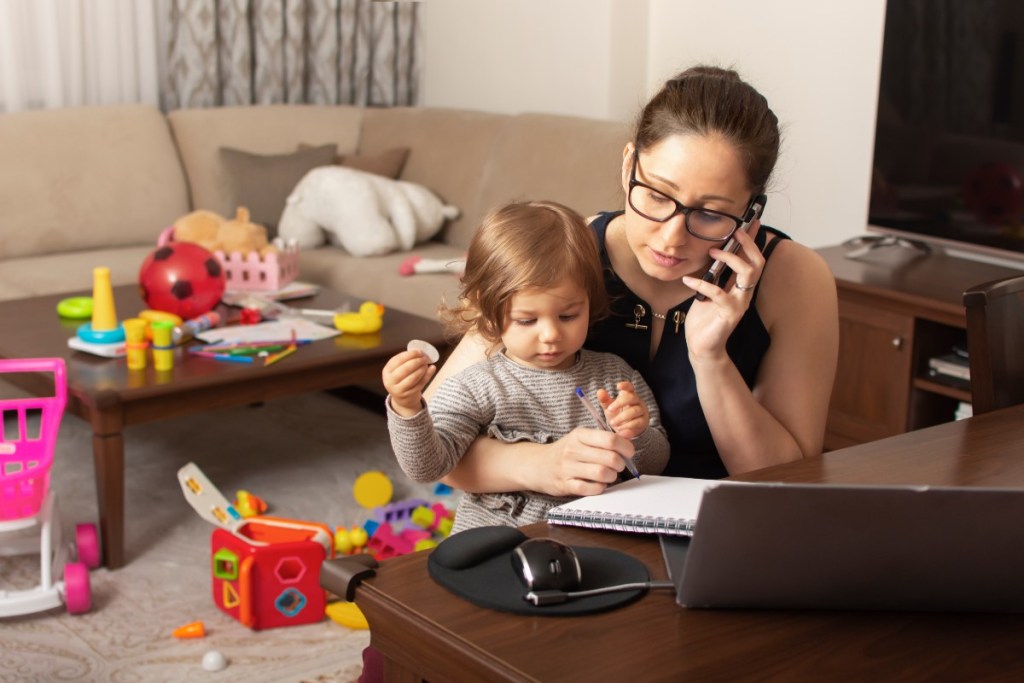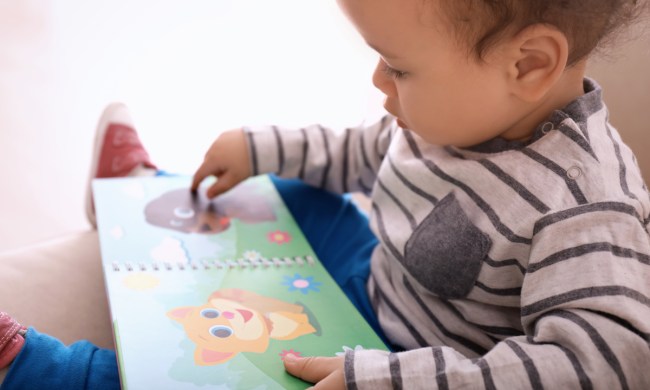Whether you work from home by choice or necessity, there are obvious benefits and drawbacks to this setup. While many people envision rolling out of bed and hopping on conference calls in PJ pants or taking naps in between emails, the reality is that working parents without child care are juggling all of the balls.
It’s a struggle and a stretch, and it can take a toll on Mom, Dad, and their little one. Working remotely with a toddler can be especially challenging; these curious creatures don’t care that you have clients to please or money to make. They demand your attention, and it’s hard for you to balance meeting their needs with meeting your deadlines.
You might be thinking you need some degree of support at this point, whether that means a part-time babysitter, a full-time nanny, preschool, or daycare. Everyone’s situation is unique, and there are several factors to consider — so we’ll help you break down the options. Deep breath — help is on the way!

Why help is necessary for you
If you’re feeling guilty at the prospect of hiring help or sending your little one off to daycare for a few hours each day, let us abate your concerns. The fact is: You can’t do two full-time jobs simultaneously. And let us be real clear here when we say that parenting a toddler is most definitely a full-time commitment (worthy of a six-figure salary, might we add).
You simply can’t be as productive or focused on your work when you are also trying to meet the nonstop wants, needs, and so-called assignments requested by your tiny at-home boss. Snacks, potty breaks, meltdowns, and nap disruptions all affect your ability to sit down and plow through your to-dos.
Moreover, burnout is real. You can only do so much in a day. Asking for help and accepting help will enable you to be a better employee and a better parent.
Toddlers need stimulation
Your toddler will benefit from the help, too. While they might think they need Mom or Dad at all hours of the day (because that’s what they’ve become accustomed to!), they’ll learn to love having a new person around or going to a new, school-like environment.
Toddlers need stimulation. They are adventurous and energetic — and you want to encourage this inquisitiveness and foster a love of learning. A babysitter or nanny will be able to devote time to playing with your child. Daycare or preschool is a social setting where kiddos get to explore, see, do, and enjoy.
The reality is that any of these options are better than a screen. Sorry to say that the TV is not a great babysitter. It may keep your little one’s attention for a while, but it’s not giving them the outlet they need to develop, grow, and become independent.

Tips and solutions to consider
Here are some things to think about when it comes to your little one and your work:
- Flexibility: If you have a traditional 9-to-5 job that ties you to your home desk, you are more likely to need regular, consistent child care. On the other hand, if you work part-time, are freelance, or have flexible hours, you might be more agile. To this end, part-time child care might give you the balance you are seeking.
- Cost: Of course, child care is expensive. Sure, it’s nice not to have to pay for a babysitter or daycare — so if you are successfully managing at home, you might consider sticking it out a little longer. However, if your work is suffering, the expense should be positioned as a worthwhile investment in your career.
Types of child care
Not sure what kind of help is right for your family, your situation, and your toddler? Here are your options:
- Full-time nanny: If you are comfortable having someone in your house, taking care of your child while you work remotely, you might consider getting a nanny. You could end up loving that you can keep an eye on things without having to actively participate. On the other hand, it can be hard to let things go and accept that your nanny has things covered. Moreover, your toddler will know you’re in the next room and might have a hard time accepting that they can’t turn to you for every want and whim.
- Part-time babysitter: If you have more flexible hours, you might be able to juggle your job and part-time childcare responsibilities. Try having a babysitter come to your house for three hours in the morning — you can blast through some work while they keep your kiddo entertained. If you have family nearby, you could consider tapping a loved one to help once or twice a week.
- Daycare/preschool: Some daycares go from 6 a.m. to 6 p.m., providing you with lots of coverage and plenty of time to get all your work done. Preschools generally have slightly shorter days, but it still might suffice. This will give your child a social setting for play and provide some peace and quiet at home. It’s a win-win, really!
Working from home with a toddler is not for the faint of heart — and if you’ve been doing this for a while, we offer you our sincere admiration. But it may be time to accept that you can’t do it all. Child care can help you be your best at work, at home, and with your family. Once you are not responsible for doing all the things at all times, you’ll find you feel less stretched and more fulfilled in all areas of life.


